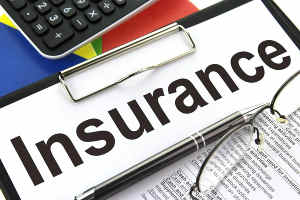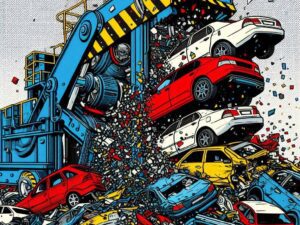Car Insurance Groups Replaced by Ratings System

Motor trade dealers will be interested to learn about the big changes now in place for car insurance. From August 2024, the way insurance is calculated for new cars has undergone a major update.
Traditional insurance group ratings have been replaced by the new Vehicle Risk Rating (VRR), which assesses vehicles based on five key risk categories.
This new system is designed to provide a clearer, more detailed assessment of each car’s risk profile, giving buyers from motor dealers more insight into how a vehicle’s design and safety features impact insurance costs.
What is the Vehicle Risk Rating?
The VRR system evaluates new cars on five key categories, each rated from one to 99, to reflect different aspects of a vehicle’s potential risk.
Below is a breakdown of categories and what they mean for car buyers, insurance brokers and providers.
Safety: Evaluates the car’s active and passive safety features, like crash avoidance and impact protection systems.Security: Assesses both physical and digital security features, drawing on Thatcham Research’s New Vehicle Security Assessment.Damageability: Assesses how a vehicle’s design, materials, and structure affect damage in a collision, influencing repair costs.Performance: Looks at the vehicle’s speed, acceleration, and how modern powertrains (like hybrids and electric) impact overall performance.Repairability: Focuses on how easy and cost-effective it is to repair the vehicle. This category is particularly important for insurance costs, as complex repairs can increase premiums.
One of the most significant categories in the VRR is “Repairability,” which strongly impacts the overall risk rating. This comes in response to rising repair costs, which, according to the Association of British Insurers (ABI), have increased by nearly 30% since 2023.
Thatcham Research has also noted that electric vehicles (EVs) are about 25% more costly to repair than their petrol counterparts and require approximately 14% more time at the local motor mechanic.
The Transitioning Stage
The VRR will operate alongside the current Group Rating system for the next 18 months, allowing both insurers and car manufacturers to adapt to these changes. After this transition period, the VRR will become the primary tool used by insurers to set rates for new vehicles.
The Vehicle Risk Rating system represents a step forward in creating a more transparent and tailored approach to car insurance.
Thatcham Research, the insurer-funded vehicle risk intelligence company, describes the major change as “a more comprehensive and dynamic framework for evaluating vehicle risks.”
Unlike the old Group Rating system where the rating was set only at the car’s launch, a car’s Vehicle Risk Rating (VRR) can go up or down over time, increasing or decreasing its insurance costs.
The Vehicle Risk Rating replaces the old scheme whereby a car was rated between one and 50, roughly determining how much it will cost to insure.

Jonathan Hewett, Chief Executive of Thatcham Research said, “New technology is challenging the existing motor insurance model, prompting an unprecedented shift in the balance of risk from the driver to the vehicle,”
“In response, we’ve worked closely with insurance, drawing upon cutting-edge data analysis to create a rating system that offers a more precise and detailed assessment of vehicle risks. This will not only help insurance price premiums more accurately but also encourage manufacturers to consider insurance outcomes when designing vehicles.”
For those looking to keep insurance premiums manageable, the VRR provides a valuable resource in choosing a car with lower associated risks. As this system becomes fully implemented, buyers can expect greater alignment between vehicle features and insurance premiums, with a focus on rewarding vehicles that prioritise safety, security, and repair-friendly design.






